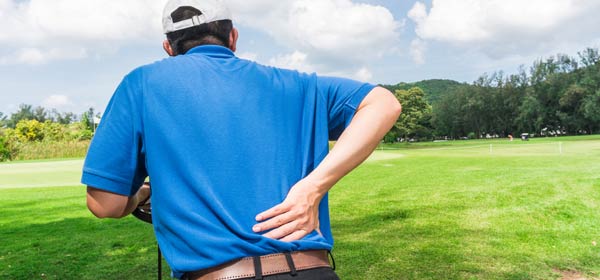Tiger Woods attempted yet another comeback to professional golf early in December. He didn’t set the world on fire, but if he had failed, it may well have been the end of his career.
For more than a decade, Tiger has battled injuries – knee, elbow and back problems that have forced him to miss three of the past four US Masters and just about everything in between.
For hundreds of golfers in their 60s and beyond, it’s a case of “welcome to our world”.
There are very few senior golfers who step on to the first tee without an aching limb and some painkillers in their golf bag. And to golfers you can probably add in lawn bowlers, bike riders, swimmers, joggers, tennis players and just about anybody who is 60-plus and participates in some form of competitive sport or active training.
But for now, let’s concentrate on how we can make 18 holes of golf a little more comfortable for those with 20 years’ more experience than Tiger.
Physiotherapist Jason Lee says that lower back pain affects up to 80 per cent of people at some point in their lives.
He says keeping active can be a key to a quick recovery.
“Current evidence suggests that encouraging early movement and mobility is crucial to a quick and speedy recovery,” he says. “Early movement reduces the likelihood of muscular spasm, further joint stiffness or associated muscular weakness.
“Often I recommend that you try to continue with your normal routine. You may perform particular tasks slower or more carefully than previously, but continuing with your normal routine is a great way to keep moving.
“Walking, even for short periods, is great for keeping the spine moving. Generally, the only activities that should be reduced are tasks that may be repetitive and below knee height.”
Mr Lee says pain relief also plays an important role.
“Speak to your local chemist or doctor who’ll be able to recommend pain relief if needed. Some pain-relieving strategies to try at home include using a heat pack or taking a hot shower. Heat can be applied for up to 10 to 15 minutes several times a day. Self-massage using topical gels and creams often can have a similar benefit to heat. Heat assists in relieving muscle spasm and provides temporary relief.”
But back to golf. If your back is troubling you, think about changing your swing. Don’t take the club back too far and use your hands and wrists to generate club-head speed. Reduce your follow-through and keep everything slow. Oh, and keep your head down. Yes, easier said than done, we know.
Advanced Pain Management suggests the following stretches:
1. Knee to chest
Lie on your back with toes pointed to the sky. Slowly bend your right knee and pull your leg to your chest. Hold for 20 seconds, extend the leg to starting position. Repeat three times on each leg.
2. Knee twist
Lie on your back with your legs extended straight out. Bend the right knee up and cross it over to the left side of your body. Hold for 20 seconds so that you get a gentle stretch through the back and buttocks. Tighten your core muscles and rotate back to centre. Repeat three times on each side.
3. The cat
Kneel on all fours with your hands beneath your shoulders and your knees directly below your hips. Exhale and gently arch your spine. Inhale, tighten your core muscles and round your back, like a cat. Move slowly between movements and hold each position for 5–10 seconds. Repeat 10 times.
4. Child pose
Position yourself on the floor on hands and knees with your knees just wider than hip distance apart. Turn your toes in to touch and push your hips backwards bending your knees. Extend your arms forward fully and allow your head to fall forward into a relaxed position. Hold this pose for 20 seconds, then slowly return to starting position. Repeat three times.
Have you had to give up a favourite sport or hobby because of back problems? Did anything work for you?
Related articles:
Melbourne Retirement Bootcamp
Bone and joint health
The benefits of walking

